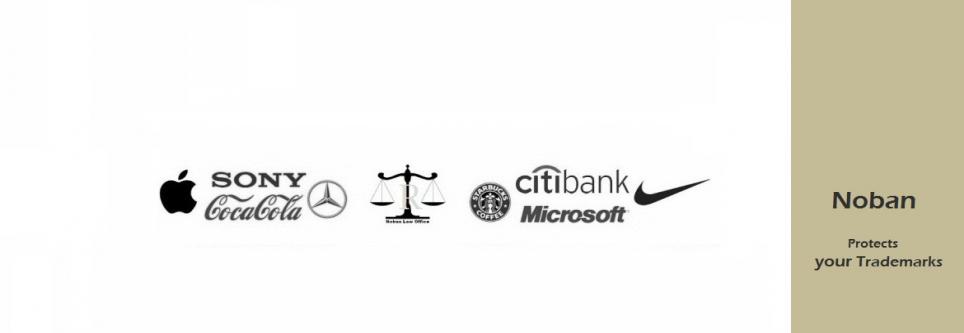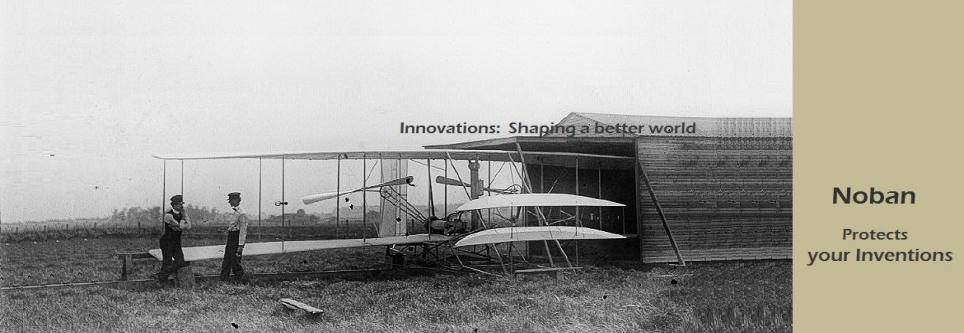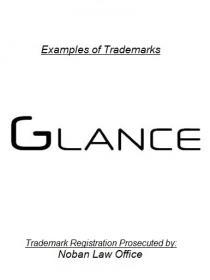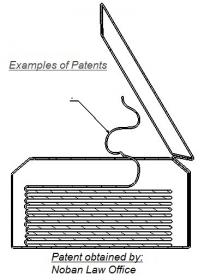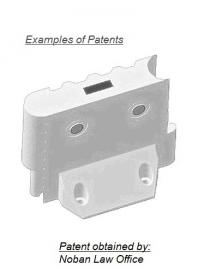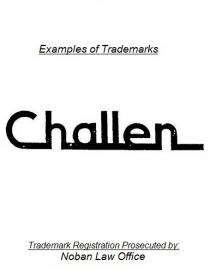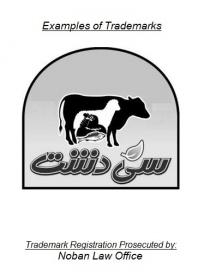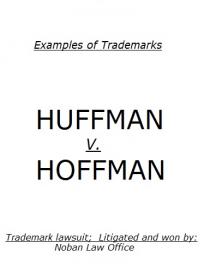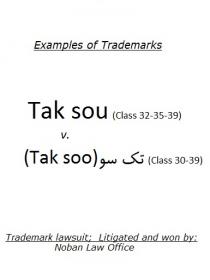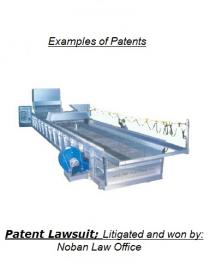FAQ/Industrial Design
FAQs on industrial design
1. What is an industrial design?
An industrial design is the shape and form of a product which is provided to attract the customer. Shapes, lines, colors of a product such as watches, sofas, shoes, and fabrics, regardless of their practical aspect, are industrial designs.
An industrial design may be three-dimensional (such as a teapot design, design of a car) or two-dimensional (such as a design on a box of tissue) or may be a combination of two-dimensional and three-dimensional (such as design of a sofa which its surfaces are decorated with special colors and lines).
2. What are rights of industrial design?
In legal point of view, the creator of a design that can attract the attention of many consumers, are granted with rights that causes other competitors to be prohibited from copying or otherwise using without the permission of the owner of the design. Thus, in general, the purpose of the rights of the industrial plan is a set of rights granted by law to a registered industrial design and gives it the power to exclusively benefit from it.
3. What is the difference between industrial design and copyright?
In general, according to copyright laws, such works are supported by designs and paintings and innovative and decorative lines as well as handicrafts and crafts, carpets and rugs, as well as visual effects. On the other hand, it is noticeable that the industrial design also consists of a set of colors, lines and drawings, and visual and decorative artwork, and the like, in order to stimulate the aesthetic sense of the customer.
Therefore, according to the foregoing, in many respects, there is no difference between the copyright law (literary and artistic law) and the industrial design law system, and the creator of a work (for example, a combining color, which leads to beautifully colored lines) can, in such a state of affairs, support himself both by the copyright law and the industrial design law of both. But, the question is, can he be able to exercise the rights of both laws simultaneously, or should he just have to choose one of the rules to support him? The result of this is that if he chooses a regime of industrial design, then all the duties and requirements of that law should be observed. For example, register it within a year from the date of disclosure, and so on.
To answer the question, the laws of the different countries are usually divided into two groups. A group such as France and Germany believe that a creator is free to choose either one or both of these legal systems to support; and, in contrast, many other countries, believe that if he chooses one of those systems then he cannot use the other legal system. It seems that Iranian rules are consistent with the second group.
4. What is the difference between industrial design and patent?
As the definition of industrial design mentioned, a creator of an industrial design does not address the technical aspects of the product, and what matters to him is to provide an attractive product (although, in designing a car, its performance and its technical aspects (such as the engine and gearbox) affect slightly in the form of its design); but on the contrary, in an invention, what is important for an inventor is to put several elements together and ultimately obtain the technical result from the function of those elements to solve a problem.
Therefore, the creator in the industrial design is looking for the beauty of the product, but in the invention, the creator seeks to obtain the product's performance and technical result. For example, in a teapot, the inventor tries to make combinations in the teapot, to keep the tea warmer, and an industrial designer trying to create a fancy teapot or modern or classic style to attract the customer.
5. What is the benefit of registration of an industrial design?
Registration of an industrial design generally is to prohibit the rivals from using it without permission of the designer. Thus we can say the industrial designs mainly are registered for these reasons:
· It raises the rate and score of companies with a better industrial design. For example, suppose GUCCI has designed bags, shoes, and apparel products from other competitors, such as LOUIS VUITTON or BURBERRY, by registering them and obtaining exclusive rights. For the customer to attract a large percentage of customers; in this case, GUCCI can easily outrun competitors in the intense competition and increase the rank of its company and brand value more than before.
· The research costs of the industrial design will be compensated. Thus, if the industrial design is not registered, others will use the design easily and at no cost, and the research costs will not be recoverable.
· Granting license will be possible. By registration of a design and getting exclusive rights, the owner can gain significant profit from granting license to others.
6. What rights are granted by registration of an industrial design?
As it was mentioned, by registration of an industrial design "exclusive rights", will be granted to the owner.
Under such exclusive rights, the owner can exclusively exploit the design, i.e. to make, sell, import, and, raise a lawsuit against a person who carries out these acts without permission.
7. What are conditions of registration of an industrial design?
All designs cannot be registered and protected as an industrial design.
According to Iran law of industrial design, industrial designs which are the result of the creator's creative effort are worthy of registration. Therefore, if the industrial design is "new " and "original", it is eligible for registration and legal protection.
The industrial design should be "new", i.e. it has never found anywhere in the world, and it is the first person to register who created it for the first time. The novelty feature may be eliminated with disclosure.
The industrial design must be "original", i.e., the designer has discovered such a product for the first time and his unique personality and taste have given the product another beautiful aspect that is fair to protect this creative effort. (Article 84 of the Iran regulations of law of patent, trademark and industrial design)
If a design is registered without the mentioned conditions, it is considered to be a violation of the law and violation of the rights of the other person or the community, and registration, is subject to revocation, and may even be the registrant they will be required to compensate for the losses.
In Iran law, the issue is that the industrial design must finally be “new” or "original" to be protected. Because in the law (Article 21), used the term "new and or original", and it is unclear that the "novelty" is a criterion, or "originality" or "both." In this case, the rules of the law (Article 84 of the Rules) have considered Iran considered sufficient to have one of these two conditions. However, this issue is problematic due to the fact that the regulations cannot create a substantive right and obligation; therefore it has a problem, in terms of standards and principles of law-making. It is also noted that the novelty feature may be eliminated over time and with its disclosure, but authenticity is not subject to time-lapse and is reserved.
8. What would be done if after registration of a design it revealed that the design was not new?
According to the law, any beneficiary can invalidate the registration before the Iran IP branch of court located in Shahid Beheshti judicial complex in Tehran.
Shahid Beheshti complex address: Intersection of Somayeh St. and Sepahbod Gharani St. Ferdowsi Square, Tehran.
If the registrar of an industrial design, has registered it without having legal conditions of registration, and has previously prosecuted against a person who has used the design, for example, has seized his products and in any way obstructed his business, the person may, in addition to requesting the cancellation of the design, also claim damages from such a registrant.
9. Can I use an industrial design before registration?
As mentioned above, one of the conditions for registration of an industrial design is novelty. Therefore, if an industrial design is used before registration, so that it can be made publicly available, that industrial design is considered to be disclosed, and will lose the description of the novelty and can not be registered and have legal support.
According to some laws, the disclosure of the industrial design to six months (and some to 1 year) before the registration is considered unconstrained. The Iranian law accepts the disclosure of design for no more than six months before filing.
10. Where should I start to register an industrial design?
Before performing any action, first you should make sure that whether a design has already been carried out or not.
As stated in the industrial design registration rules, an industrial design can be registered if it is new. So, if you enter the registration process without doing search and being certain, it may be risky in terms of cost and time.
In order to check the records, you can search the market or the industrial design basic websites for industrial design registration offices in different countries, as well as magazines, books and the like. You can search in the Iran industrial design office website.
After search, you can apply for registration by referring to the industrial design registration office and submit the application for registration of industrial design.
Iran Industrial design registration office:
Fayazbakhsh Street, Khayyam Street, Imam Khomeini Square, Tehran
11. How much does it cost to register an industrial design in Iran?
The official cost of registration of an industrial designs in Iran is usually (in one floor) in the name of the real person, is 50 thousand Tomans and in the name of the legal person (companies and institutions) is 150 thousand Tomans.
12. Do I need an attorney to register an industrial design in Iran?
Although it is not obligatory to appoint an attorney in Iran, it is strongly recommended that you have a lawyer for all the legal process of search, registration, or the negotiation of contracts, as well as in the courts.
13. What examinations are done by registration office of industrial design?
Examination of industrial design application normally is not explicit in Iran. Namely, although the registration term is the design should be new all around the world (and there is no previous record), the registration authority does not have a legal requirement for research, and this is the responsibility of the beneficiaries to request cancellation of design in case they are informed that the design is not new.
14. How long does it take to register an industrial design in Iran?
Normally, it takes 3-5 months to register an industrial design in Iran.
15. Where does an industrial design is protected?
A design is protected in each country or region of several countries which has been registered in accordance with its rules.
16. How can I register an industrial design out of Iran?
According to general principles, industrial designs are usually protected in any country which is registered. Therefore, in general, if one chooses to be supported in 20 countries, he has to register his design in each of the 20 countries.
The problem of registration in separated countries today is resolved by some international treaties or bilateral or multilateral agreements among some countries, and individuals belonging to those countries (nationals, residents, etc.) can apply for registration in their own country without attending any single country, and only by choosing other member states of the treaties, to register and support those countries. Among the most important international treaties on this subject, the Hague Agreement on the International Registration of Industrial Projects which greatly facilitates such a record.
Sometimes, the contracts and treaties signed on the territory of a particular geographic region between countries (or organizations) and, in the context of a special registry office, the persons may directly apply to that administration. ; Such as Office for Harmonisation in the Internal Market (OHIM), among (15 members) of the European Union, which is based in Spain. Or the African Industrial Property Management Authority (ARIPO) for the registration of industrial designs between African countries (English speaker); or African Overseas Property Office (OAPI) for registration among African countries (French speaker); as well as the management of Benelux projects supported by Belgium, the Netherlands and Luxembourg.
Unfortunately, Iran is not a member of any of these treaties and contracts. Therefore, Iranians should register in each country separately, within a certain time period, in person or by their local lawyer take the measures and stages of registration.
It is recommended that, if you want to register abroad, and before any registration, in Iran or outside of Iran, to have better opportunities for legal support of the lawyers use supporting service of NOBAN Law Office.
17. How long does the law protect the industrial design?
The registration term of protection of industrial design in Iran is 5 years, which can be renewed for two further five years.
18. Can I transfer the right of my design to another party?
The owner of the industrial design can transfer his rights. In these cases, the contract for the exploitation of the industrial design between the parties should be specified and the rights and terms of operation should be clearly and precisely maintained.
Due to the significance of such contracts (which relates to future commitments and rights of the parties) and to avoid any unforeseen concerns, it is recommended that such contracts be leased to their own experts. Settlement of contracts is one of the services which are offered by NOBAN Law Office.
19. What are guarantees of violating the legal rights of industrial design?
According to Iran's laws, violations of legal rights of industrial design are criminal (prison, financial punishment, etc.), as well as legal (compensation) judicial prosecution in Tehran courts.
20. What does it mean by violating the rights of industrial design?
In general, the violation of the patent rights means any activity (production, supply to the market, etc.) of the invention without the permission of the owner.
21. What acts can be performed in case of infringement of the industrial design in Iran?
If your registered industrial design is infringed, you can (in person or by an expert attorney) file a lawsuit or criminal lawsuit against the person who committed the offense. In the event of a claim for damages, the court issues a warrant for payment of damages caused by violations of your design, and criminal penalties will also result in a form of imprisonment or a fine.
22. Who protects an industrial design in order not to be violated?
There is no particular person or reference authority to take care of the granting rights of the owner, and he must protect and be a guardian of his rights.
Meanwhile, one of the services of the NOBAN Law Office is to monitor and watch patent rights, trademarks, and industrial designs that are monitored in the administrative system (especially at the registration office) to inform the registration of similar cases and, if necessary, to protest.
